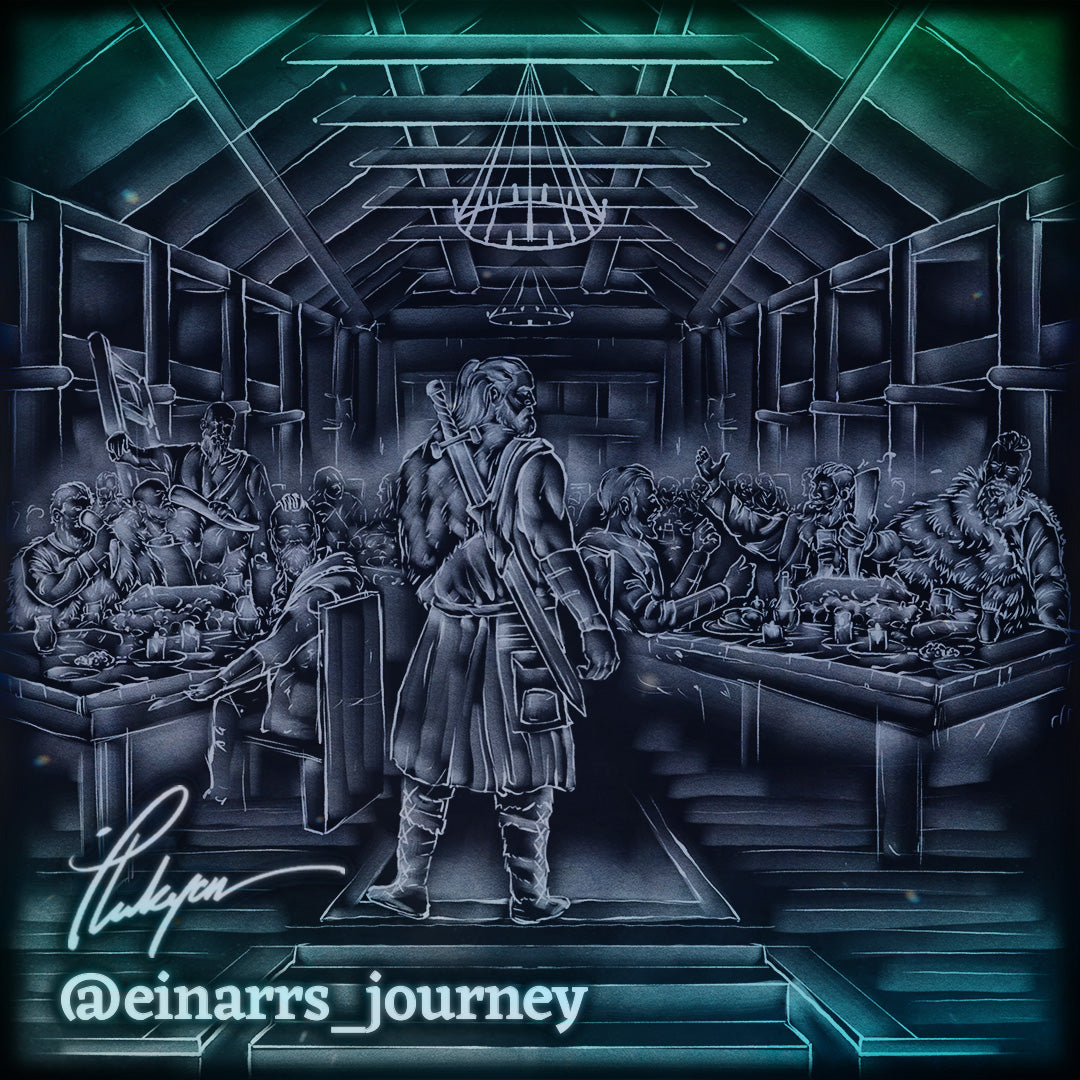
HÁVAMÁL • STANZA 1 ANALYSIS & DEEP DIVE
A LESSON IN DISCERNMENT AND VIGILANCE

ÓÐINN, HÁVAMÁL STANZA 1:
“At every doorway, you should peer around. Take a good look inside, for you never truly know, just who is a friend, and who is a foe.”
The first stanza of Hávamál imparts a timeless lesson in vigilance and discernment when entering new and unfamiliar situations. It cautions us to take a good look at new surroundings to discern the possible friends and threats that we could encounter.
When you enter a new scenario, especially a social one, it's wise to survey your surroundings and take a good look at the environment and the people within. Ultimately, you're there to enjoy yourself, but you should also beware of the possible threats or situations that could cause you trouble.
You'll also gain a good understanding of who is approachable and who is not, which will allow you to make the most of your time and enjoy yourself, while steering clear of any potential danger.
-
Old Norse: Gáttir allar • áðr gangi fram • um skoðast skyli • um skyggnast skyli • því at óvíst er at vita • hvar óvinir • sitja á fleti fyrir
SOME KEY THINGS TO KNOW
My English Interpretation of Stanza 1
“At every doorway, you should peer around. Take a good look inside, for you never truly know, just who is a friend, and who is a foe.”
*Take note that this interpretation is not a direct translation from the original Old Norse, rather my own understanding. The core message is, however, true to the original Stanza's lesson of vigilance and discernment when entering new scenarios.
The lesson that Stanza 1 imparts on us
Hávamál Stanza 1 teaches us an important lesson about vigilance and discernment in assessing people and situations, as appearances can often be deceiving.
We're taught that it's important to thoroughly scan new environments and situations so that we can accurately seek out opportunities and avoid the possible threats within.
The importance of the Hávamál to the Old Norse
The Hávamál held profound importance in Old Norse society as a comprehensive guide to ethical conduct, preserving traditional wisdom, and fostering cultural identity. It offered moral and practical guidance on topics ranging from personal honour to legal matters, serving as a repository of cultural knowledge.
Through its poetic and mythological elements, it provided insights into Norse spirituality and the beliefs of the time. As both an educational tool and a source of entertainment, the Havamal contributed to the cultural and moral fabric of the Old Norse people, reinforcing their connection to their heritage and guiding their actions in daily life.
The Preservation of Wisdom
The Hávamál served as a repository of traditional wisdom and practical knowledge. It encapsulated the accumulated wisdom of generations, passing down insights on a wide range of topics, from hospitality and friendship to the use of runes and magic.
In a largely oral culture, this text helped preserve and transmit important cultural knowledge and the generally accepted way of living.

3 Key lessons we can extract from stanza 1
1. VIGILANCE
Learn how to people read. There are many books out there that can teach you the basics of human body language. these skills are invaluable. Joe Navarro's 'What Every Body is Saying' would be my primary recommendation.
2. AWARENESS
Put your phone down every now and again, especially in public. You'll be surprised at just how many people aren't really present
3. COMPLIANCE TACTICS
People will use all sorts of sneaky tricks to get what they want from you. 'Influence, The Psychology of Persuasion' by Robert Cialdini is a book that points of the 6 common tactics that people will use to gain your compliance.

HUNGRY FOR MORE HÁVAMÁL CONTENT?
I'M WRITING A BOOK ON IT
Drop your email below and I'll contact you when I finish the project
